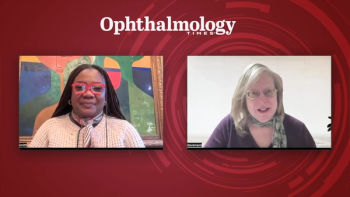
Opus Genetics releases topline results from LYNX-2 evaluating phentolamine ophthalmic solution 0.75%
Key Takeaways
- Phentolamine ophthalmic solution 0.75% reduces pupil size by blocking alpha-1 receptors, minimizing risks associated with older agents.
- The LYNX-2 trial met its primary endpoint, with significant vision improvement in 17.3% of treated patients versus 9.2% in the placebo group.
The phase 3 trial observed the treatment of chronic night driving impairment in keratorefractive patients with reduced mesopic vision.
Opus Genetics has released positive topline results from LYNX-2, its phase 3 clinical trial evaluating phentolamine ophthalmic solution 0.75% for the treatment of chronic night driving impairment in
Phentolamine ophthalmic solution 0.75% is a non-selective alpha-1 and alpha-2 adrenergic antagonist to reduce pupil size. The company noted that phentolamine ophthalmic solution 0.75% blocks the alpha-1 receptors found on the radial iris dilator muscles, which are activated by the alpha-1 adrenergic receptors, without affecting the ciliary muscle, which reduces risks such as retinal tears or detachment associated with older parasympathomimetic agents.
LYNX-2 was a randomized, double-masked, placebo-controlled trial in 199 patients who had previously undergone keratorefractive surgery and reported decreased visual acuity under mesopic low-contrast conditions. Patients were randomized to receive either phentolamine or placebo, which was self-administered in both eyes nightly, treated, and observed over 6 weeks.
According to the company, the LYNX-2 study (
George Magrath, MD, CEO of Opus Genetics, commented on the trial results in a press release from the company.
“Patient-reported outcome results demonstrated improvements in night-driving vision, enabling patients to function more effectively in low-light, low-contrast conditions,” said Magrath. “This data builds on earlier results from the LYNX-1 trial and provides evidence of efficacy for this condition, which currently has no FDA-approved therapies. We believe this therapy could address a true unmet need and could offer meaningful benefits to keratorefractive patients experiencing glare, halos, and reduced functional vision in low-light, low-contrast environments.”
LYNX-2 patients will continue to be monitored for long-term safety over 48 weeks.
References:
Opus Genetics Announces LYNX-2 Phase 3 Trial Met its Primary Endpoint for Phentolamine Ophthalmic Solution 0.75% in Keratorefractive Patients with Visual Disturbances Under Mesopic, Low-Contrast Conditions. Published June 2, 2025. Accessed June 2, 2025.
https://ir.opusgtx.com/press-releases/detail/488/opus-genetics-announces-lynx-2-phase-3-trial-met-its-primary-endpoint-for-phentolamine-ophthalmic-solution-0-75-in-keratorefractive-patients-with-visual-disturbances-under-mesopic-low-contrast-conditions
Newsletter
Don’t miss out—get Ophthalmology Times updates on the latest clinical advancements and expert interviews, straight to your inbox.





